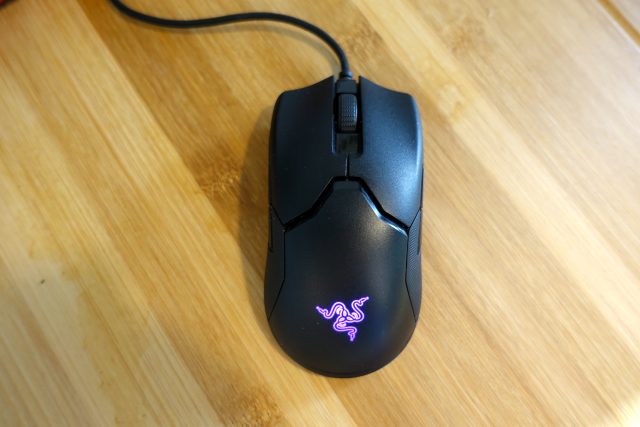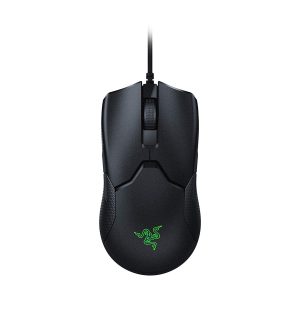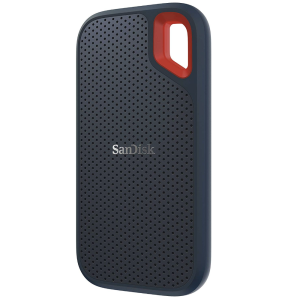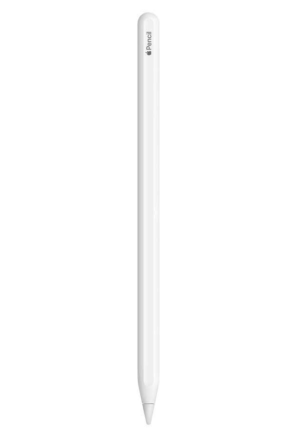The last installment in our five-part holiday gift guide series this year is tailored for power users—those who know their way around technology and feel uneasy settling for gear that doesnt provide high performance.
The nine gadgets weve rounded up below may be overkill for most of the people in your life, but they should satisfy those who consider themselves enthusiasts in some way. Per usual, weve curated these recommendations based on hands-on testing weve done over the course of 2019. If none of these items fit your shopping lists needs, though, take a look at our previous gift guides for the home, the office, the road, and affordable gadgets for additional inspiration. For now, though, lets indulge a little in the latest and greatest tech.
Note: Ars Technica may earn compensation for sales from links on this post through affiliate programs.
Razer Viper

The Razer Viper is marketed as a competitive gaming mouse, and it works well for that purpose. But its excellent for everyday use as well. The main draw here is lightness: at just 69 grams, the Viper is a breeze to slide around. It has a flatter shape and might appeal more to “claw” grippers than its peers, but its contoured gently on the top and sides, with a slightly flared-out bottom that gives room for your palm to rest. Everyone has their preferences when it comes to mice design, but something this light and uncomplicated should present little fatigue over the course of the day.
Beyond that, the Vipers RGB lighting is limited to subtle changes on the Razer logo, so it doesnt come off as gaudy the way other gaming mice do. The main right and left buttons feel quick and crisp, due in part to an optical switch design that makes double-clicks rare. They should also keep the Viper more durable over time. (For what its worth, weve tested the mouse for four months and have encountered no reliability issues thus far.) The scroll wheel is a bit on the slower side but still comes off smooth. The optical sensor has up to a 16,000 DPI resolution, which is overkill, but it tracks smoothly and consistently across surfaces all the same. Razers companion software is far from required to get the Viper working, but its unobtrusive enough, and it can be used to fine tune DPI presets and adjust more granular settings like lift sensitivity. The cable is exceedingly light and flexible. And the whole design is ambidextrous, so lefties arent left out in the dark.
There are things to nitpick about the Viper. The side buttons are consistent but sit fairly flush against the side of the mouse. The hard rubberized texture on those sides isnt quite as grippy as it could be. And while we like the DPI adjustment button being on the bottom of the device, since it makes accidental presses less likely, others may prefer it being more readily accessible on top. Its not the cheapest mouse, either. But as a gift, the Viper is highly comfortable and performant for power users of all kinds.

Razer Viper
Buy Now (Ars Technica may earn compensation for sales from links on this post through affiliate programs.)
SanDisk Extreme Portable SSD

While there are plenty of storage solutions for your home or office data, SanDisk's Extreme Portable SSD is a good option for data you need with you wherever you go. The surprisingly small, portable SSD is IP55-rated, so it will withstand water and dust, as well as shock and vibrations. It can even be dropped from up to two meters without suffering any damage.
That's impressive for an SSD that can fit comfortably into the palm of your hand. While it has one USB-C port on it, it comes with both USB-C and USB-A cables so it can be connected to almost any PC. All of this combined makes it one of the easiest SSDs to travel with, and one of the most convenient to use for most people.
Available in 250GB, 500GB, 1TB, and 2TB options, the SanDisk Extreme SSD is also one of the fastest portable storage solutions that we've tested. It's similar to Samsung's T5 SSD in data read and write speeds, making it one of the fastest you can get that also has a truly portable (and durable) design. Samsung's T5 SSD is more affordable, but SanDisk's Extreme SSD is better for power users because it has that extra layer of protection in its design along with the same ease of use as Samsung's device.

SanDisk Extreme Portable SSD (1TB)
Buy Now (Ars Technica may earn compensation for sales from links on this post through affiliate programs.)
Listing image by Jeff Dunn
Raspberry Pi 4

The Raspberry Pi 4 is still a Raspberry Pi, which means its still an affordable little Linux computer that opens the door to any number of hacked-together science projects. You could make it the centerpiece of an all-encompassing retro game console, a DIY smart speaker, an RC car built with LEGOs, or whatever other hobbyist endeavor you might have in mind.
This latest model comes with a fairly noticeable performance upgrade over the previous Raspberry Pi 3 Model B+. Theres a faster 1.5GHz Cortex A72 CPU and options for 2GB or 4GB of RAM in addition the usual 1GB. There are now two USB 3.0 ports among the four total USB ports. Since the Pi 4 is no longer constrained by a USB 2.0 bridge, its gigabit Ethernet port is now capable of reaching actual gigabit speeds. The whole thing is powered by USB-C instead of the aging microUSB, too.
There are some caveats to note here, most notably that you need a non “e-marked” USB-C cable to power the device. Thats because the Pi 4s USB-C port technically breaks the USB-C spec. What this means in layman's terms is that you should stick to the official charger. The full-size HDMI port has also been removed; instead, you get two ports that use the less ubiquitous micro HDMI standard but do allow for multi-monitor setups. If your loved one doesnt have a case, microSD card, or heat sinks, you might be better off paying more for a full “starter kit.” And while the Pi 4 does get closer to a "genuine" desktop PCs performance, its not comfortably there yet. Still, its plenty of power for the money, and it remains a wildly versatile tool for the budding engineer in your life.

Raspberry Pi 4 Model B (1GB RAM)
Buy Now (Ars Technica may earn compensation for sales from links on this post through affiliate programs.)
iFixit Pro Tech Toolkit

For those with an interest in repairing or modding their own gadgets, iFixits Pro Tech Toolkit should supply most of the items necessary to do their DIY servicing. It includes a 64-bit driver set, with tri-point, pentalobe, and other special screwdriver bits for opening up devices that may or may not be accessible through traditional Philips, hex, or Allen screws (all of which are included in the kit as well). There are tweezers, spudgers, and other pry tools for carefully taking apart sensitive components, and a small suction cup for removing glass parts that may be glued down. An anti-static bracelet is there to help prevent shocks, along with a metal sorting tray for organizing stray parts.
All of this should be enough to, say, repair a cracked iPhone screen or mod a better d-pad onto a Nintendo Switch. Naturally, it also pairs well with the various repair guides on iFixits site. All told, it should be comprehensive enough to assist those whod rather not pay a repair shop to get their tech fixed.

iFixit Pro Tech Toolkit
Buy Now (Ars Technica may earn compensation for sales from links on this post through affiliate programs.)
Apple Pencil

Plenty of Apple's products have become ubiquitous, including some iPad models. But power-users, particularly those in creative fields or those that are especially tactile people, will want to invest in the second-generation Apple Pencil. It works with all the newest iPad Pro models and takes what was great about the first-generation Pencil and adds more to it.
First and foremost, the responsiveness and lack of latency of the first-generation device is present in the second-gen Apple Pencil. It's, without a doubt, the smoothest writing tool for the new iPad Pros. There's little to no lag when drawing or taking notes, and its pressure sensitivity and tilt functions make it a superb artist's tool.
Second, the new features added to the second-gen model are quite useful. The Apple Pencil now pairs automatically with your iPad Pro (no need to stick it into the tablet's port), and it magnetically attaches to the edge of the iPad Pros as well. That makes it much easier to take with you without worrying you'll lose it. While it sits attached to your iPad Pro, it can also wireless charge using the tablet's power supply so you won't have to worry about your Pencil running out of juice before you even get to use it.
There's nothing wrong with the original Apple Pencil—if you have one and it works with your current iPad, you don't need to upgrade. However, the updates and new benefits of the second -generation Apple Pencil make it a must-have for those who rely on their iPad Pros for daily productivity.

Apple Pencil (2nd gen)
Buy Now (Ars Technica may earn compensation for sales from links on this post through affiliate programs.)
Cooler Master MH751

If you know someone who spends an inordinate amount of time chatting with friends over video games, upgrading their gaming headset (or buying them a proper pair in the first place) might be a worthwhile gift. Cooler Masters MH751 is still our favorite here: it has a relatively neutral, well-balanced sound thats great at locating sounds where they should be in the mix; its detachable microphone does well to make voices sound clear and full; and it is exceptionally comfortable, with ample padding everywhere and enough room for larger heads. Its design doesnt exactly scream “gamer,” either, so its totally possible to remove the mic and use the MH751 as a solid pair of everyday over-ear headphones. (You just might want to replace the included cord in that case, since the default one runs a bit long.) On top of that, its great value, typically retailing for less than $80 online.
This is a decidedly no-frills headset—theres no virtual surround sound, for one—but it excels at the fundamentals. It should become a staple for your loved ones long gaming sessions.

Cooler Master MH751
$74.99 from Amazon (Ars Technica may earn compensation for sales from links on this post through affiliate programs.)
Lenovo ThinkVision M14

Once you go dual-monitor, it's hard to go back to just one screen. But if you decide to change things up and work from a new location, that new place probably won't have an external monitor lying around for you to use. Lenovo's $249 ThinkVision M14 portable USB-C monitor can fix that problem. It's exactly what it sounds like—a portable 14-inch monitor that you can take with you anywhere to add that second screen you crave into your traveling work station.
The ThinkVision M14 excels at being truly portable. Measuring just 0.5-inches thick at its widest point and weighing 1.13 pounds, it doesn't add much in the way of weight or space to your bag. The thickest point on the monitor is where the hinge, which folds up flat against the back of the monitor when not in use.
Imagine the ThinkVision Read More – Source






